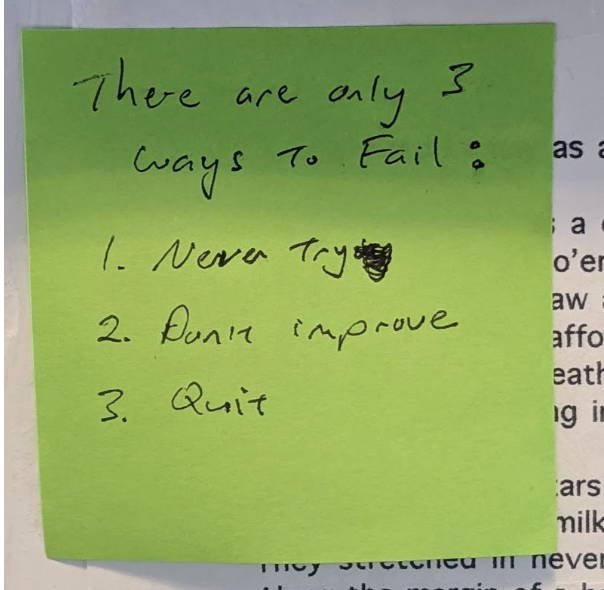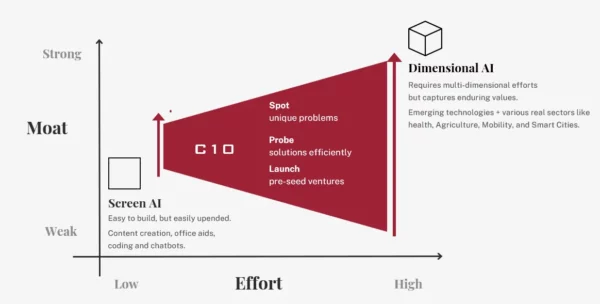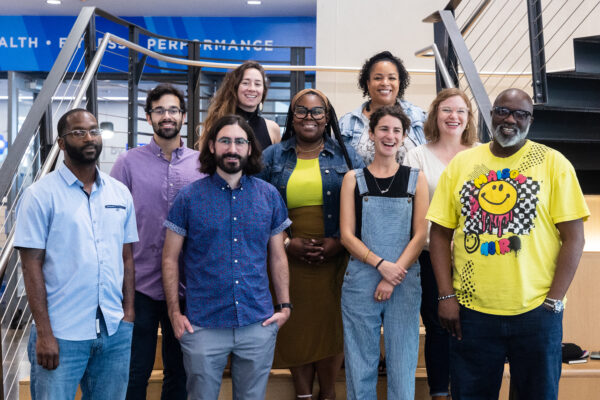GREAT INNOVATIONS CAN COME FROM FAILURE
If you’ve ever spent the weekend on the couch, watching a movie with a bowl of microwave popcorn, you can thank innovator Percy Spencer.
Spencer discovered a new way to cook food after chocolate melted in his pocket while he was working on microwave experiments. Sometimes, this is how innovations — like the microwave oven — are born. Although we often define success as accomplishing a given task to achieve a goal, great innovations can come from failure.
Whether mistakes lead to serendipitous discoveries or simply move you closer to your goal, they are a necessary prequel to success. A problem frequently has more than one correct solution. When we don’t achieve the desired result, we might feel discouraged, unaware that a deeper look could reveal the next great discovery.
Mistakes Lead to Learning
Whether you’re part of a new startup or a corporation that’s seeking to grow through innovation, you’re bound to bungle a few things. Even if your next mistake isn’t an accidental success, it can become an opportunity to gain new knowledge and fix flaws.
Acknowledging that an error occurred is the first step to transforming a mistake into an opportunity. Although it may seem counterintuitive to admit fault, particularly if you work in a litigation-prone industry, some health care companies do exactly that by implementing communication and resolution programs (CRPs) within their hospitals. These programs, which encourage honest communication between hospital staff and families, result in higher reporting rates, fewer lawsuits, and lower legal costs.
Floris Wolswijk, Founder/CEO of Queal, standing outside CIC Rotterdam
Next, analyze the error. What went wrong? What could you have done differently? Analysis is crucial to innovation and benefits organizations as well as individuals. When you examine processes closely, you can isolate which factors correlate with mistakes and discover ways to improve.
For CIC Rotterdam-based entrepreneur Floris Wolswijk, seeing that someone else unsuccessfully tried to introduce a product isn’t enough to rule out its viability. “Was it the wrong timing, too expensive, or something else?” he recommends asking. “There are thousands of examples online, and you can discover them for your specific industry without having to bear the costs yourself.”
Of course, obtaining accurate information about mistakes requires transparent, honest reporting, which can be difficult in a deny-and-defend culture. If employees fear the consequences of mistakes, they’ll try to conceal or minimize them. So how can you encourage your organization to embrace their errors?
A Culture of Kindness
When employees are ashamed, they become uncertain, nervous, and doubtful of their own abilities. This self-consciousness leads to more mistakes and creates a self-fulfilling prophecy. In addition to creating a stressful culture, shame can stifle innovation. If employees fear approaching leadership because errors are punished, they won’t speak up when they have new ideas or dissenting opinions for fear of being perceived as wrong. Staying silent about mistakes can cost more than the error itself in terms of time, money, or even lives.
So how do you create a mistake-friendly culture?
-
Appreciate good work. If you only address people’s performance when it’s sub-par, they’ll think you don’t notice their efforts and will become less motivated to perform well.
-
Share the results of mistakes without shaming or blaming. Focus on meeting and achieving goals, rather than assigning large losses to individual employee actions.
-
Ask questions. “How can we do better next time?” is a great way to start. Give people a day or two to analyze what went wrong. You may be surprised by their insight.
-
Redefine risk. Asking risk-assessing questions can help you determine if a risk is worthwhile. Rather than focusing on the consequences of an idea going wrong, consider what will happen if nothing changes. “For the entrepreneur, risk is measured differently than for a non-entrepreneur,” CIC’s Stas Gayshan says. “Risk for an entrepreneur is the risk of non-action. What will the world look like if we don’t try this?”
Celebrate Mistakes
Dr. Christi Barb, Accentologist of Adastra Speech, at CIC Cambridge
It’s one thing to talk about kindness with mistakes, but it’s another to show it. Here are a few ways to put your words into action:
-
Thank the person who helped you find a problem.
-
Host “failure parties” to reward mistakes and honor the lessons learned from them.
-
Stay motivated and keep a positive attitude.
If you cultivate a positive attitude about mistakes, you’ll lead your organization to its greatest potential. CIC Cambridge member Dr. Christi Barb keeps a note with her favorite quote about failure on her calendar:
There are only three ways to fail: 1) Never try. 2) Don’t improve. 3) Quit.
There are only three ways to fail: 1) Never try. 2) Don’t improve. 3) Quit.
When you expect failure as part of entrepreneurship, your vision will become contagious. So embrace those errors, and watch for the gifts your mistakes bring. They can expose weaknesses, improve relationships, fix problems, and teach people. As you learn from your happy little accidents, innovation will become a regular feature of your startup as you grow.
Whether you invent the next cooking device or move your organization closer to the next sales goal, embrace your errors. You never know what discoveries are waiting for you. In the words of Thomas Edison, “I have not failed. I’ve just found 10,000 ways that won’t work.”








